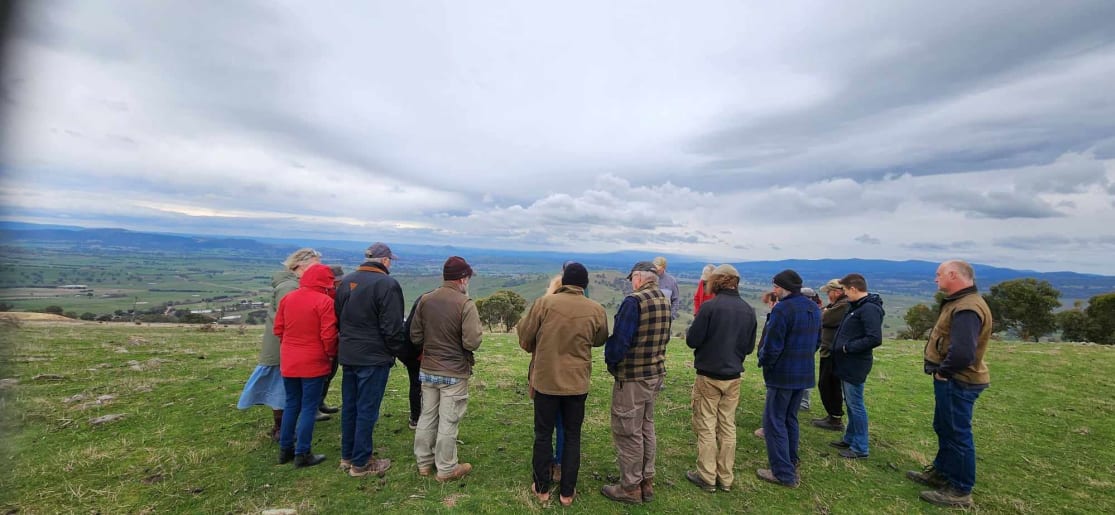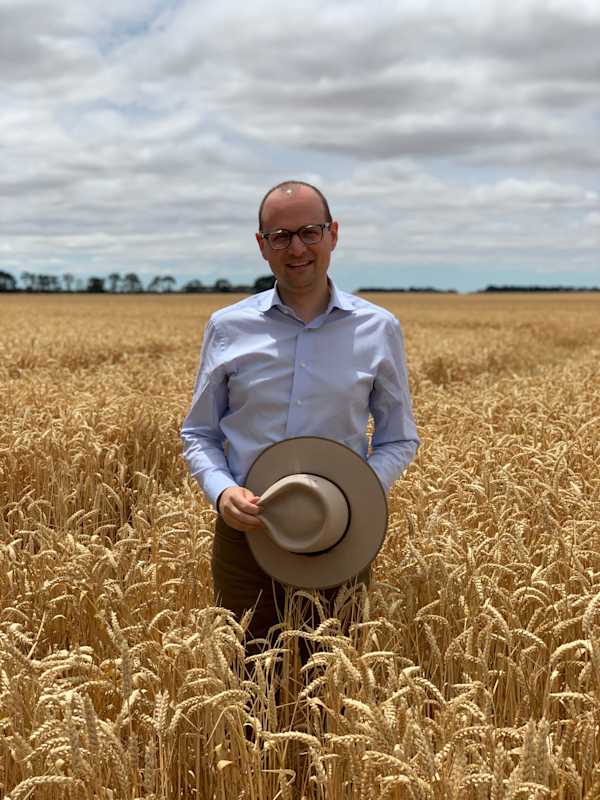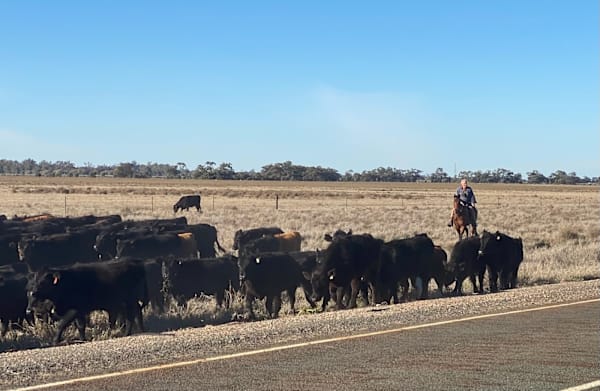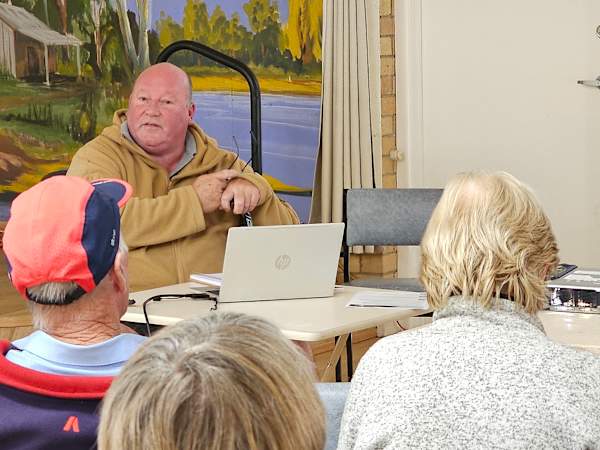MERRIJIG graziers, Helen and Andrew Crockett opened up their Glenroy Road property on August 19 to host Rehydrating Farm Landscapes, a full-day workshop delivered by agroecologist David Hardwick and facilitated by Up2Us Landcare.
An introductory workshop delving into the basics of the water cycle in rural landscapes and the science behind landscape rehydration, around 20 attended the six-hour event with the workshop funded by the Australian Government’s future drought fund.
The workshop - a balance between theory and field work – was held in the Crockett’s shearing shed with the cattle and sheep enterprise providing the perfect location for on-site exploration and identification of significant landscape features pertaining to farm hydrology.
David Hardwick is based in Albury and is a partner and founding member of agricultural consultancy business Soil Land Food.
Bringing over 20 years’ experience in rural landscapes, farming and food systems to the role, David leads extension, training and consulting project delivery across the region and the country.
Latest Stories
Drawing on career experience in revegetation and landscape restoration, agronomy, soils, agribusiness, biofertiliser research and development and manufacturing along with organic farming, David employs his extensive expertise to deliver hands-on learning experiences.
Attendees at the local workshop participated in numerous activities and exercises designed to reinforce the theory with the practical, giving farmers the ability to apply lessons learnt on their own properties.
David’s passion lies in empowering farmers with this knowledge and these skills that make a difference, helping producers transition their enterprise towards a more regenerative, ecological future.
Exploring three specific hydrological zones on the Crockett’s property, from source to transition to deposition, attendees made their way from the highest vantage point on the farm to the lowest where multiple water sources had merged becoming a larger stream and more defined waterway.
Each zone provided insights as to how to manage hydration within the landscape, whilst providing that necessary overview to inform whole-farm planning and mapping of catchment boundaries.
“Understanding stream order and hydrological zones helps in managing not just water flow but sediment distribution on property,” David said.
“Effective land management practices, including proper grazing techniques, maintaining adequate ground cover (in an ideal world at 100 per cent to minimise erosion and run-off) along with understanding the dynamics of evaporation and transpiration, are also essential for optimising soil infiltration and managing water resources.”
Referring to the PhD work of Dr Judi Earl from the University of New England, David emphasised the connection between planned grazing and improved infiltration rates.
“Earl’s study demonstrated that transitioning from set stocking to planned grazing to ensure ongoing ground cover, increased soil infiltration rates tenfold within three years,” David said.
This dramatic improvement is in part due to the development of extensive root systems in grasses.
A well-maintained pasture with adequate ground cover will develop a robust root system improving soil porosity and structure and increase water infiltration.
“Conversely where animals graze continuously in one area maintaining grass at a short height, root volume is significantly reduced, resulting in tighter soil, poor infiltration rates and higher run-off rates,” he said.
Infiltration is one of the most critical aspects of land management, influencing everything from erosion control to water cycle sustainability and healthy ecosystems, and was the primary focus of the workshop, improving water absorption into the soil during rainfall.
David also delved into the “small water cycle” which refers to more localised weather systems and the affect land management practices have on local precipitation patterns, with land clearing and de-forestation leading to reduced rainfall and altered weather patterns.
Rhiannon Quigley, project officer at Up2Us Landcare, confirmed the timely nature of the workshop, and discussed some of the more significant take-aways from the day.
“After a dry autumn and winter, water on farms is not far from people’s minds,” she said.
“Keeping ground cover and not over grazing is really important for holding on to both soil and moisture, slowing down any surface flows when it does rain and directing moisture down into the soil profile via the plant root systems.
“The creation of structures to help divert, hold, or disperse water on hillslopes can be useful, however, a good understanding of soil types and potential outcomes is vital before undertaking any ground works.
“Before jumping in to on-ground works, having a clear picture of your objectives with a thorough understanding of the areas hydrological cycle will help with good decision making and achieving desired outcomes,” Rhiannon said.















